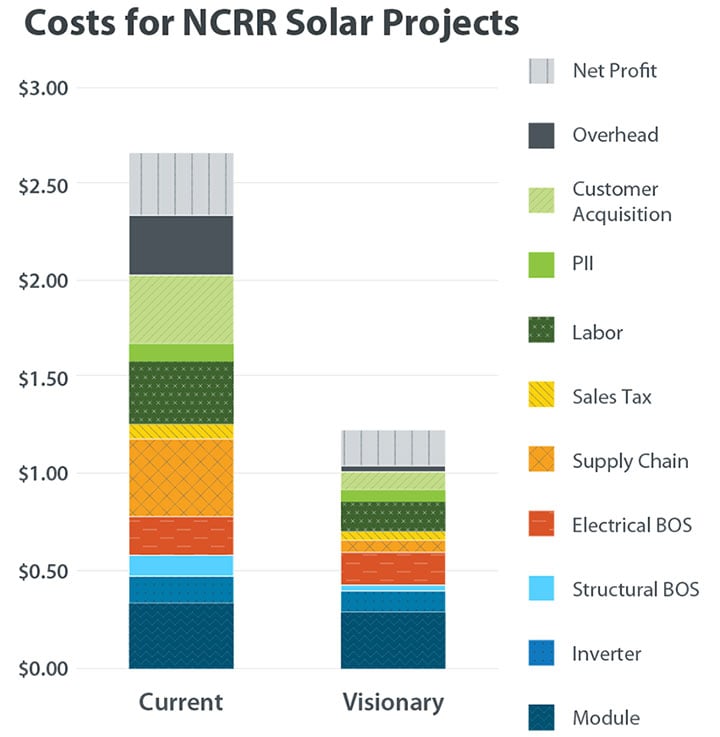Solar Energy Evolution and Diffusion Studies: 2021–2023 New Construction and Roofing Study
The Solar Energy Evolution and Diffusion Studies (SEEDS) 2021–2023 study focuses on identifying new strategies to increase co-installation of solar with new construction and reroofing projects.
These new strategies could sharply reduce cost, scale up solar adoption, and increase customer satisfaction.
Approach

The average costs for installing rooftop solar during new construction and reroofing (NCRR) projects.
The SEEDS 2021–2023 study has three distinct research components. First, the team will develop a bottom-up cost model for installed solar through new construction, reroofing, and roofing-integrated products. It will model potential cost reduction through hardware and business model innovations. The team will then develop market outlooks for 2030 based on the data—providing stakeholders with a road map for cost-effective solar installation in new homes or on new roofs.
Next, to gain a comprehensive understanding of the opportunities and barriers that new construction and reroofing contractors face, in phase two the team will develop surveys for builders, roofers, and consumers who have recently built or reroofed a home or plan to in the next few years. Survey results will help map the flow or information about co-installation and barriers to installing.
Finally, in the third phase of the study, the team will use survey results to design and implement field-based experiments to test ways to overcome information and structural barriers for installing solar during new construction or reroofing.
Background
About 3.3 million homes are either built or require roof replacement in the United States every year, totaling a potential of 30 gigawatts of solar capacity. However, solar currently is not a standard consideration when building a new home or replacing a roof.
Installing rooftop solar at the same time as new construction or reroofing could sharply decrease supply chain, installation labor, permitting, and customer acquisition costs—overall decreasing solar soft costs. At the same time, co-installation could increase customer satisfaction because they don't have to find qualified contractors and PV costs can be integrated into existing financing products. For example, the cost of solar can be rolled into a new home mortgage or a home equity loan for a new roof.
Achieving these pathways for solar installation will require new services and business practices. The SEEDS 2021–2023 study seeks unlock the potential of solar in new construction and reroofing by exploring existing information gaps, barriers, and opportunities within the industries.
SEEDS 2021–2023 Partners
Lawrence Berkeley National Laboratory
The National Association of Home Builders
More Information
The SEEDS 2021–2023 study team will release publications and host webinars throughout the study, which will be announced on this page and through the email list. Learn more about the U.S. Department of Energy's SEEDS-3 program.
Contact
Share
Last Updated April 3, 2025
